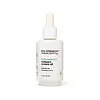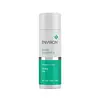What's inside
What's inside
 Key Ingredients
Key Ingredients

 Benefits
Benefits

 Concerns
Concerns

 Ingredients Side-by-side
Ingredients Side-by-side

Carthamus Tinctorius Seed Oil
MaskingCyclotetrasiloxane
EmollientRosa Canina Fruit Oil
EmollientCyclopentasiloxane
EmollientTetrahexyldecyl Ascorbate
AntioxidantRetinyl Palmitate
Skin ConditioningCaprylic/Capric Triglyceride
MaskingDaucus Carota Sativa Seed Oil
EmollientHelianthus Annuus Extract
EmollientHelianthus Annuus Seed Oil
EmollientOryza Sativa Bran Extract
Skin ConditioningPersea Gratissima Oil
Skin ConditioningPunica Granatum Seed Oil
EmollientRosa Moschata Seed Oil
EmollientRosmarinus Officinalis Leaf Extract
AntimicrobialSalvia Hispanica Seed Oil
MoisturisingSolanum Lycopersicum Seed Oil
EmollientTocopherol
AntioxidantTocopheryl Acetate
AntioxidantVaccinium Macrocarpon Seed Oil
Skin ConditioningCarthamus Tinctorius Seed Oil, Cyclotetrasiloxane, Rosa Canina Fruit Oil, Cyclopentasiloxane, Tetrahexyldecyl Ascorbate, Retinyl Palmitate, Caprylic/Capric Triglyceride, Daucus Carota Sativa Seed Oil, Helianthus Annuus Extract, Helianthus Annuus Seed Oil, Oryza Sativa Bran Extract, Persea Gratissima Oil, Punica Granatum Seed Oil, Rosa Moschata Seed Oil, Rosmarinus Officinalis Leaf Extract, Salvia Hispanica Seed Oil, Solanum Lycopersicum Seed Oil, Tocopherol, Tocopheryl Acetate, Vaccinium Macrocarpon Seed Oil
Ingredients Explained
These ingredients are found in both products.
Ingredients higher up in an ingredient list are typically present in a larger amount.
This ingredient is an emollient, solvent, and texture enhancer. It is considered a skin-softener by helping the skin prevent moisture loss.
It helps thicken a product's formula and makes it easier to spread by dissolving clumping compounds.
Caprylic Triglyceride is made by combining glycerin with coconut oil, forming a clear liquid.
While there is an assumption Caprylic Triglyceride can clog pores due to it being derived from coconut oil, there is no research supporting this.
Learn more about Caprylic/Capric TriglycerideHelianthus Annuus Seed Oil is the oil derived from the seeds of a Sunflower. Sunflower seed oil is non-fragrant. It is an emollient, meaning it helps to soften the skin.
Sunflower seed oil contains many fatty acids. The fatty acids found in sunflower seeds include (from highest amount to least): linoleic acid, myristic acid, palmitic acid, stearic acid, arachidic acid, oleic acid, and linolenic acid.
These fatty acids help the skin create ceramides. Ceramides play a role in repairing the skin barrier.
Helianthus Annuus Seed Oil helps moisturize the skin. This in turn helps the skin look more rejuvenated and smoother.
Sunflowers are rich in vitamin E.
Historians believe Indigenous cultures of North America domesticated sunflowers before corn. Thus they relied on sunflower oil for a variety of uses. One such use is moisturizing skin and hair.
Sunflower seed oil may not be fungal acne safe. We recommend speaking with a professional if you have any concerns.
Learn more about Helianthus Annuus Seed OilTocopheryl Acetate is AKA Vitamin E. It is an antioxidant and protects your skin from free radicals. Free radicals damage the skin by breaking down collagen.
One study found using Tocopheryl Acetate with Vitamin C decreased the number of sunburned cells.
Tocopheryl Acetate is commonly found in both skincare and dietary supplements.
Learn more about Tocopheryl Acetate